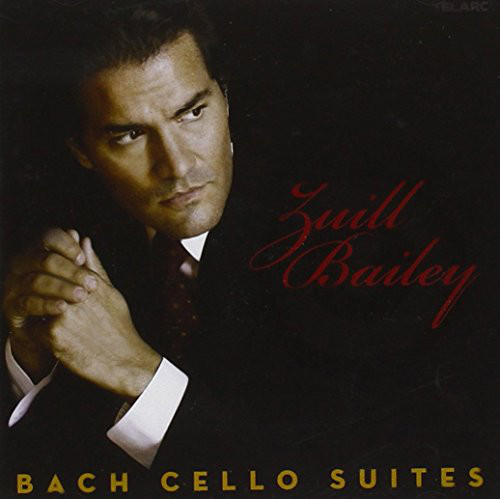
Zuill Bailey. Bach Cello Suites. Telarc CD TEL-31978-02 Released 2010 Recorded Dec 2008. At American Academy of Arts and Letters, New York.
Cello played: 1693 “ex Mischa Schneider” Matteo Gofriller cello and Victor Fetique cello bow.
The Cellist.
Zuill Bailey is an American born cellist. His early years include participation of the National Symphony’s Fellowship programme. By this means he has enjoyed lessons from luminaries such as Starker Bylsma and Harell. He quotes influence by Emanuel Feuermann consulting even with the great cellist’s assistant Mosa Havivi.
The Recording.
I approached this performance with low expectations. Having bought the CD at random I found myself feeling rather biased by the artist’s photo. He bears an uncanny resemblance to a young Steven Seagal, the actor. Indeed, he has appeared as an actor on occasion! Apparently one scene he filmed involved harpooning an unfortunate individual with an end pin!
Suites one to four.
The recordings start with a very reasonable rendition of the first suite Prelude which left me fairly neutral in response. The tone is rich and well balanced with a slightly woody texture. There are well shaped phrasings and a laid back mood created by a steady unhurried pace.
This continues to the Allemande which displays the artist’s ability to produce a very refined and delicate sound from a cello famed for its big sound. Then comes a bit of a surprise with a fast very well articulated Courante, perhaps a legacy of studying Feurmann? There is a hint of aggression and stridency but very quickly tempered by contrasting quiet passages echoing each theme.
The Sarabande is back to a refined approach with chords gently caressed as opposed to snatched. The music flows in a very relaxed but emotive manner. Vibrato is sparing but this is not in any sense a historically informed recording.
The Minuets take us back to well articulated precise playing with balanced rubato. The playing seems to emphasise the contrapuntal nature and implied polyphony of the music rather than the dance origins of this and other movements. The Gigue then brings another surprise with a forceful and almost aggressive approach. There are still moments of peace in contrasting sections.
This pattern is repeated throughout the recording and seems emphasised as the Suites gain in complexity and scale.
The fifth Suite.
I found myself drawn in the more I listened. As a result, I have tremendous respect for this performer. He appears to be an improbable grafting together of Janos Starker and Steven Isserlis. By this I mean he combines very confident, assertive and technically accomplished playing with appropriate moments of pure delicacy and sensuous shaping. This is often within the same movement.
The cream on top came when I realised that Bailey has the ability to really display the polyphonic nature of Bach’s music by just the right emphasis of key notes and phrases. This was particularly noticeable in the great fugal passage of the fifth Prelude. The progression and development of the basic theme was brought home to me as never before and builds to a suitably climactic ending.
The Sarabande of this Suite famed for its sparse writing was played with great reserve. There was virtually no vibrato and the performer resisted the temptation to build the tone and volume up as the piece moved along. It just progresses to a bleak nothingness! Great stuff!
The performance of the fifth Gigue would have left Starker and Maisky wondering if they need to visit the Gym more often. Just listen to the last bars if you want to hear a loud forceful cello ending.
Conclusion with the sixth Suite.
Finally coming to the sixth Suite Gigue. This, rightly or wrongly always has seemed to me to be a fitting ending to a performance of the Suites. My favourite recording has always been Tortelier’s first recording, in which he plays out the two bar double stopping passages to great effect. Bailey equals this but also adds to it a highly effective preceding restraint which seems to get stronger through the repeats to the end. This has the effect of an image in my mind of a high jumper gathering himself prior to making a great jump. There is a sense of a restrained coil, focussed concentration and then sudden release of energy landing on the other side of the bar with a sense of triumph!
Charles.